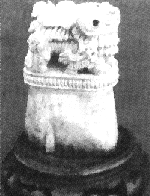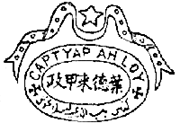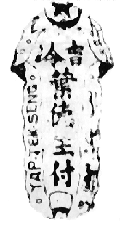|
What does
Kapitan Cina mean? The
title of Kapitan Cina
or Capitan China
is thought to originate from the Portuguese who ruled
Malacca after defeating the Malaccan sultanate. They
continued the system practised by the Malaccan sultanate
of administering the various foreign traders in Malacca,
whether Indian, Arab, Javanese, Chinese and so on,
through a headman of their own choice. The headman was
then confirmed in their appointment by the ruler.
Kapitan Cinas had the powers of a
typical Malay chief, including the power of life and
death over his followers. They could also make laws when
necessary.
The Kapitan Cina's primary duty
was to keep peace, administer civil and criminal law, and
occasionally collect tax when required. This institution
spread to the Malay states with the arrival of
foreigners.
The office of Kapitan Cina
became closely assimilated to the Malay political system,
as with the arrival of Chinese tin miners, Malay chiefs
found it easier to collect their share of tin revenues
through the Kapitan Cina. They were ready to accept any
candidate who was supported by the Chinese, could keep
peace amongst his countrymen, and was able to pay taxes
promptly.
Yap Ah Loy held the honorific
title of Dato
and the personal title of Sultan
Indra Perkasa Wijaya Bakti Kapitan China Kuala Lumpur
Klang - which can be translated to
"Yap Ah Loy (acknowledged by the) Sultan Gallant
Victorious Loyal Chief (of the) Chinese (of) Kuala Lumpur
(and) Klang."
He was given a silver seal,
with his title inscribed in Jawi Malay and a drum as his
office insignia. Like other Malay chiefs, he was allowed
personal bodyguard under 2 captains, the Panglima
Kanan and Panglima
Kiri. He wore Malay dress during
Malay ceremonies and sometimes wrote to the British
Resident in a formal Malay letter.
 |
 |
 |
| One of Yap Ah Loy's seals. Note the Chinese carving of a lion on it. |
Yap Ah Loy's seal with English,
Chinese and Jawi inscriptions. |
Another of Yap Ah Loy's seal. |
| 


